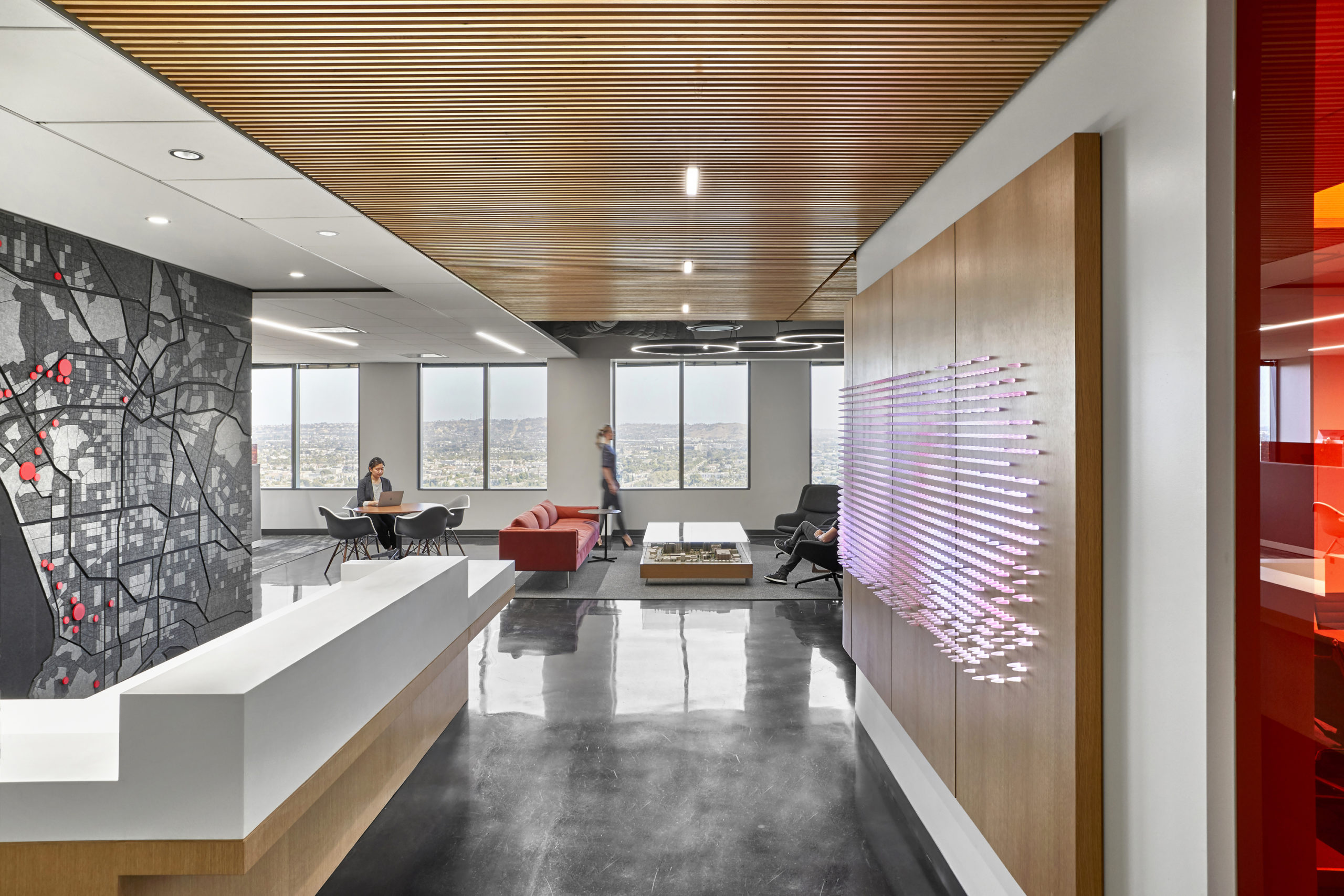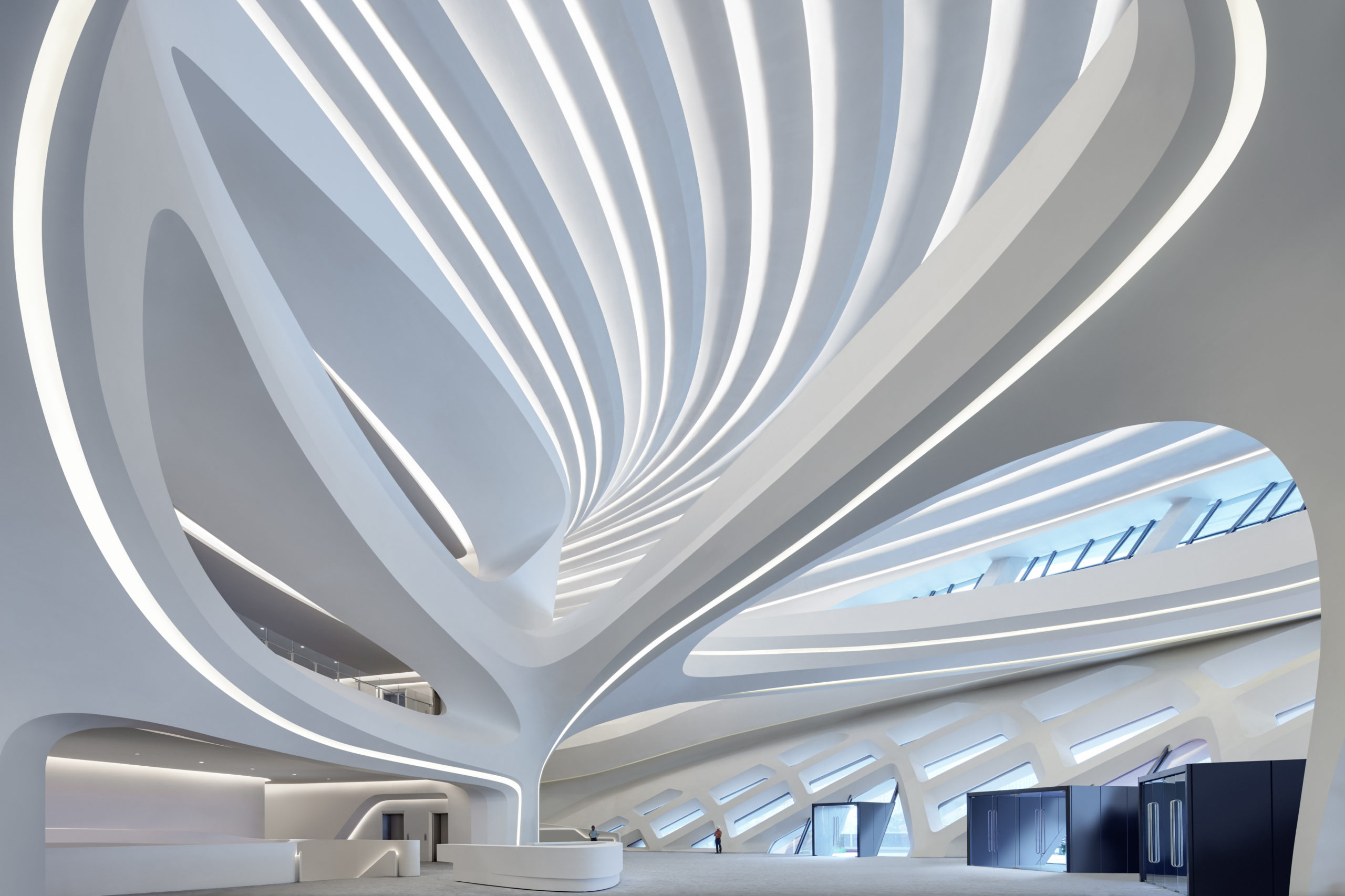James Woolum is Interior Architecture Partner at ZGF. With a career in architecture spanning 29 years, Woolum has significant experience designing corporate, healthcare, research, and institutional environments. His design approach leads to honest, authentic, and user-focused solutions deeply rooted in the unique culture, process, and community of each client.
I’ve always loved science fiction movies, particularly those that offer a glimpse of the (near or distant) future without trying to completely re-invent the world from scratch. Think of Frank Lloyd Wright’s Marin Civic Center in Gattaca, the Bradbury Building and Wright’s textile block Ennis House in Blade Runner, and yes, even London’s baroque-revival Royal Opera House in The Fifth Element.
Cut to today. The crisis-casting regarding the future of workplace in the post-quarantine era has been rampant, but now that the return to the office looks imminent, the rubber is about to meet the road for task forces assigned to create smart staffing plans and safe workplace programming. The assumptions, predictions and recommendations to date have ranged from flat-out falsehoods to some viable suggestions, but a lot of them have relied on the basic premise that the future of workplace is going to look something like the past. In the absence of real-world precedents, I couldn’t help but wonder, are we relying too much on convenient fiction to calm our collective concerns?
As designers, we have a duty to observe without bias or preconception, and a responsibility to approach issues new and old with sensitivity and optimism. Now, more than ever, we in the design community must remain open-minded, agile and committed to being part of the solution — whatever form it may take. So, what is the future of workplace design? The simple truth is that we just don’t know yet. What we do know is that humans tend to overreact to the short-term ramifications of change (or social upheaval) but underestimate its long-term effects.
If we have learned anything from this global pandemic, it is that variables are changing at the speed of light — we can only truly solve for right now but must be prepared to adapt and evolve day to day, week to week and month to month as observations, experience and science emerge. It’s way too early in the game for hard and fast answers. For now, let’s cast aside the fears and take a look at the facts and fictions of workplace predictions in this moment. In the immortal words of Princess Leia, “if you only believe in the sun when you can see it, you’ll never make it through the night.”
The Claim: It’s the End of the Office
The Verdict: Definitely Fiction

ZGF Architects LLP, Los Angeles Office Renovation; image © Garrett Rowland
We’ve proven we can Zoom, Skype and Microsoft Teams with one another in between emails, texts, FaceTime, and chasing kids, pets and significant others away from our home desks. If you’re so inclined, there’s even Goat-to-Meeting. It’s no surprise that we quickly adapted our professional (and social) lives to revolve entirely around technology; we were already so tied to our phones and to the digital realm that the jump to WFH was less like hyperspace and more like a slight side-shuffle.
But it’s important to remember that even before the quarantine, many people were feeling lonely and isolated and, dare I say, socially distanced. For a lot of us, the office is the last remaining outlet for daily face to face social interaction.
The business and personal well-being benefits of being in a shared work environment, able to engage IRL with colleagues and clients, cannot be denied and aren’t going anywhere. Similarly, our newfound success with virtual connectivity won’t be going anywhere either. Between phased return plans and groups who simply can’t return due to childcare or health implications, it will be more important than ever for us to be vigilant in maintaining social and professional bonds among colleagues by any means necessary.
Perhaps safer to say that this is the beginning of the end of proximity bias and that employers will have a much higher comfort level with employees working from wherever they need to, whenever they need to, for any reason. With a greater focus on health and hygiene, wellbeing and safety, we may actually see the workplace of the future evolve into a more thoughtful and meaningful experience.
The Claim: More Space, Fewer Desks
The Verdict: Partly Fiction
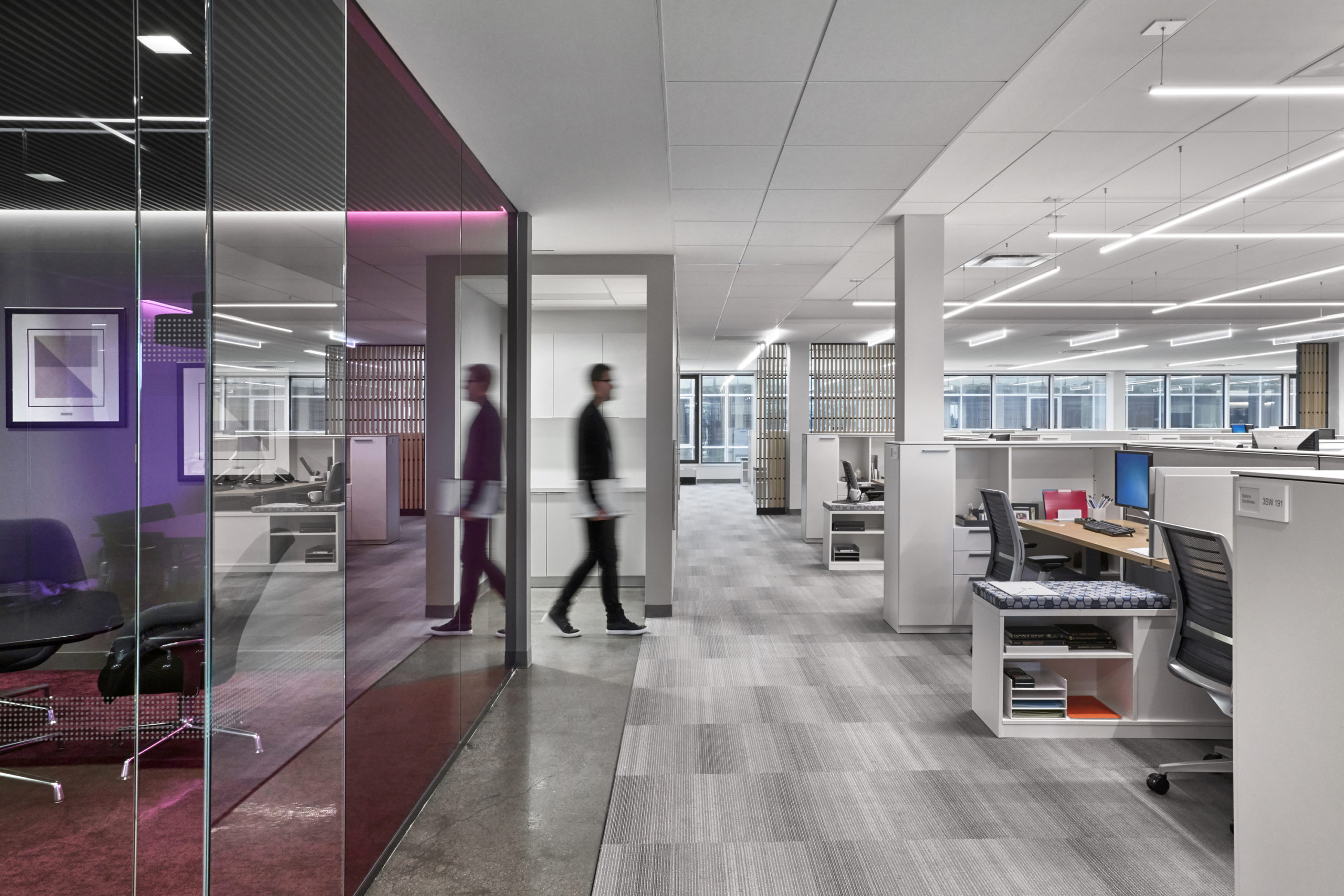
Publishers Clearing House, Corporate Headquarters; Image © Garrett Rowland
We’ve been reading and hearing a lot of chatter about de-densification of workspace, increasing spacing between workstations, fewer desks in a given area, etc. The economic realities of the workplace market did not support this approach before COVID-19 and are even less likely to do so after the quarantine is lifted.
The fact is that we’re going to be in recovery mode for some time, both health-wise and financially-speaking, and the idea of ‘doing less with more’ flies in the face of the realities that both people and organizations will be navigating. It is imperative that we take this time now, as well as what will no doubt be a measured return to public life, to observe and analyze how we can sensitively, strategically, and safely design workplaces that actually do more with the same and in some cases less than before.
The Claim: Staggered Seating / The Shift to Shifts
The Verdict: Yes, True. But It’ll Take Work to Make it Work
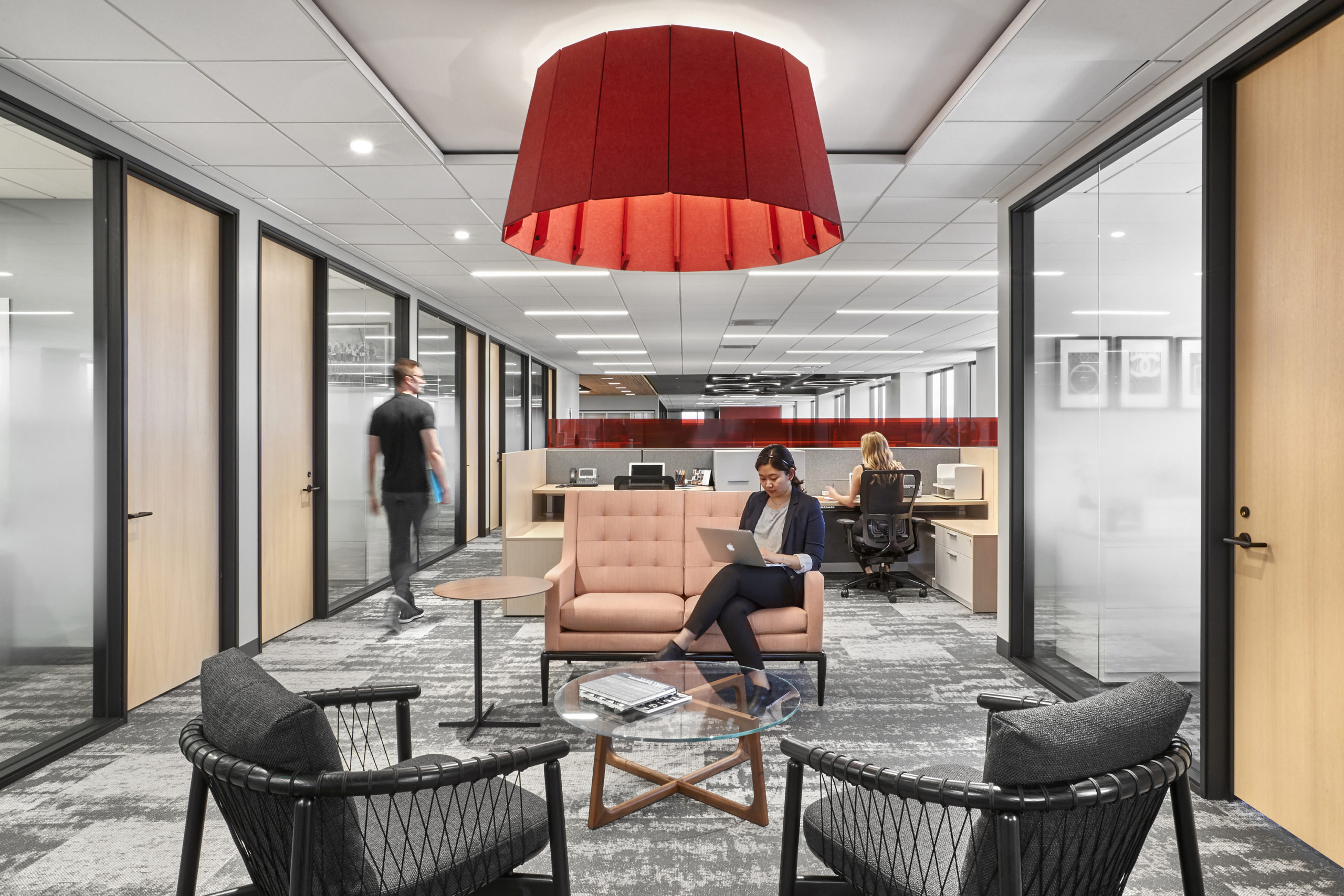
Cedars-Sinai Medical Center, 6500 Wilshire Boulevard, 20th Floor, FPDC Relocation; Image © Garrett Rowland
Creating a staggered attendance plan — effectively bringing shift work to the corporate workplace — coupled with zig-zagged seating arrangements in open work areas is a logical solution that has started popping up in a lot of return to office strategies. Many companies, including ours have pushed surveys to gauge the willingness and ability of workers to come back; an important first step in understanding the scale of the problem. Initial responses across the board seem to indicate that 30% of workers are unable to return to office based on childcare needs, personal health issues, or other circumstances.
The good news is that reduced census means fewer people to accommodate back in the office but there’s still quite a bit of detailed thinking to be done about how to disaggregate those who are able/choose to return, even when they are working on the same team. There’s no one-size fits all solution.
We are considering alternate workdays for different teams, skip-stop seating to allow more social distancing, and amended protocols for use of shared spaces, including assigning enclosed spaces to those who may normally sit in the open plan. We call them “flex offices” for a reason!
The Claim: Anti-Infection Design Is the New Must-Have
The Verdict: Old Facts with a Fresh Coat of Paint
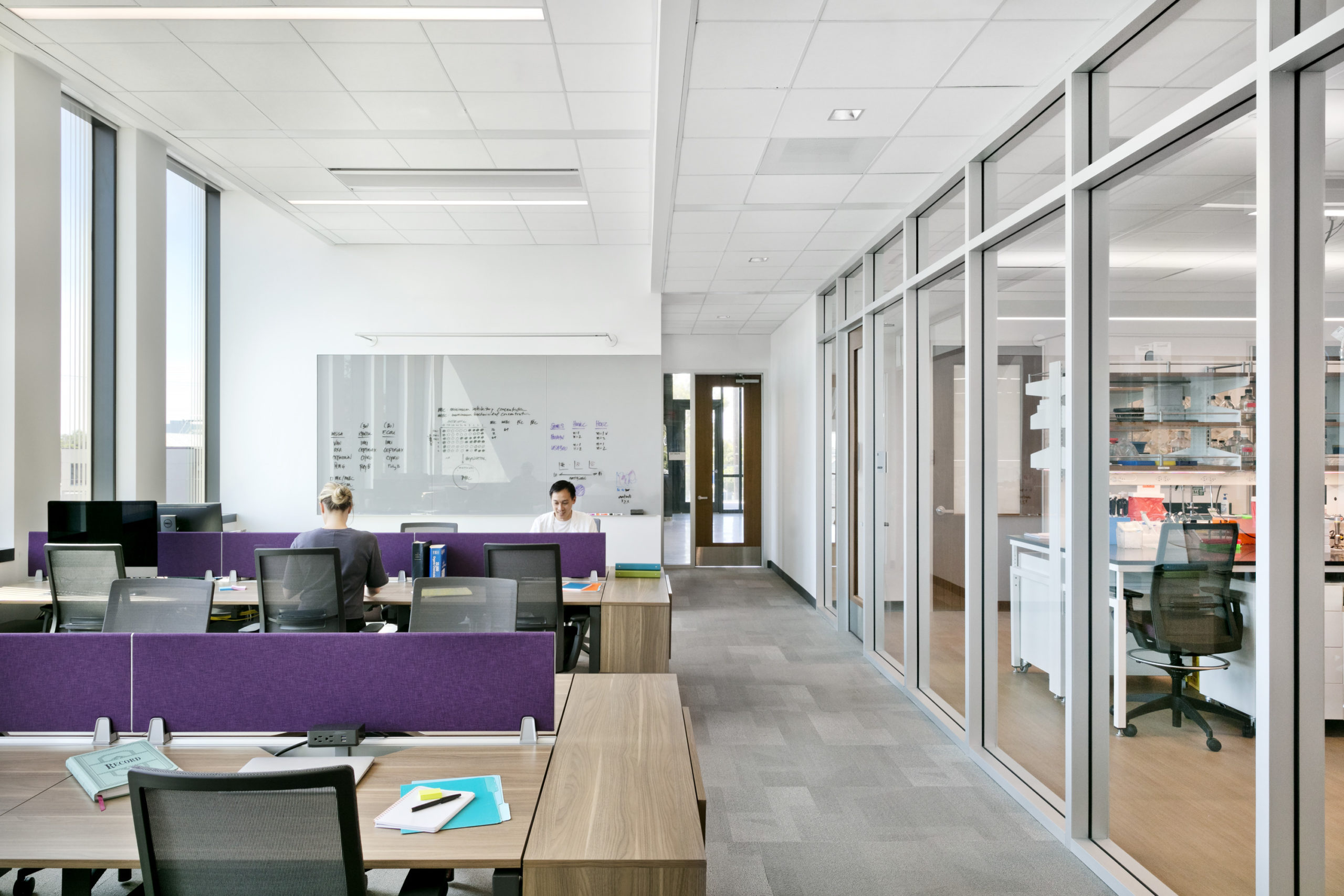
The Lundquist Institute for Biomedical Innovation, Medical Research Laboratory 1 © Connie Zhou
I would argue that major changes in — and expectations of — hygiene and behavior in shared environments will take a front seat, in the end influencing the degree to which more physical interventions are necessary. But let’s break down what we’ve been hearing thus far…
- Will we see a return to 8×8 workstations with higher panels or the addition of Plexi-Glass divider screens — essentially “breath barriers,” which one might argue some needed even before the global outbreak? It could happen, but we’ll just be debating their effectiveness for years in the same way we’ve debated high vs low panels for acoustical isolation. We’d be paying a premium for the choice, too. Anecdotal evidence suggests the cost of Plexiglas as a raw material has gone up 25% in the last two weeks alone! While there is definitive science to suggest the current virus is airborne, there is not yet definitive science that higher dividers are guaranteed deterrents to infection.
- Will touchless technology for doors, elevators, coffee makers, and more become the new norm when we specify products for workplace environments? I’d say yes, but that was all coming our way regardless; the COVID crisis will have only sped those choices to market.
- Will new technologies for fabrics and surfaces allow for more frequent, aggressive, or high-powered cleaning methods? Sure, but we’ve been doing that for years in healthcare environments so it’s simply time for the corporate workplace to catch up.
- Will new materials and products saturate the market in response to infection control concerns? My expectation is yes, however, I would encourage caution. Many products are likely to be heavily marketed as “anti-bacterial;” however, even one of the leading anti-microbial formulators has issued a statement that their technology is not proven to have anti-viral properties. Current anti-microbials are also considered worst-in-class for pollution, bioaccumulation in the food chain, and for harm to those who work with the products in factories.
The Claim: Distance Markers Will Become the Norm
The Verdict: I’m For It, But the Details Will Matter
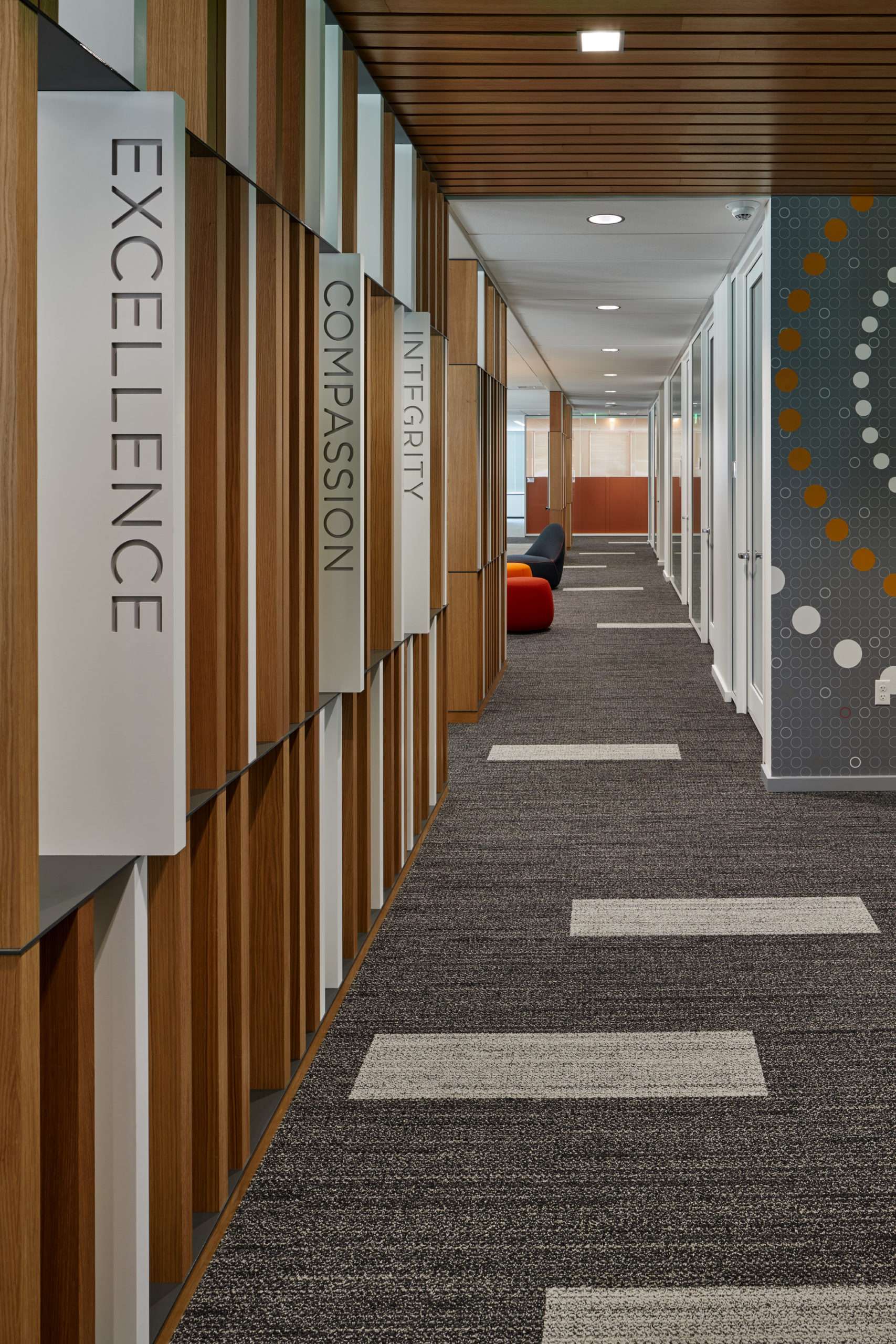
Seattle Children’s 818; Image © Doug J Scott, All Rights Reserved
We’ve all seen blue tape or chalk lines cropping up in grocery stores, banks, and restaurants to help us keep appropriate social distance, but those temporary measures aren’t going to cut it for the long haul. In corporate environments, no matter how casual or creative, even the most functional, informational, and instructive of elements still need to be treated with design savvy. Design, whether it’s through architecture or graphics and wayfinding, is about experience and behavior — sometimes, like following a pandemic, it’s about changing behavior.
To effectively encourage behavioral change, companies will have to demonstrate not only that new hygiene and safety precautions have been implemented, but that they have been recognized as essential measures and embraced as part of the evolving post-pandemic culture. But in times of uncertainty, humans crave consistency and reassurance, so it’s going to be important that interventions such as distance markers or signage indicating expectations for handwashing, wearing of masks, or other social behaviors be fully integrated and treated as an extension of the organization’s branding and identity.
The Claim: One-Way Hallways Should Become Common
The Verdict: Not a Bad Idea, in Theory
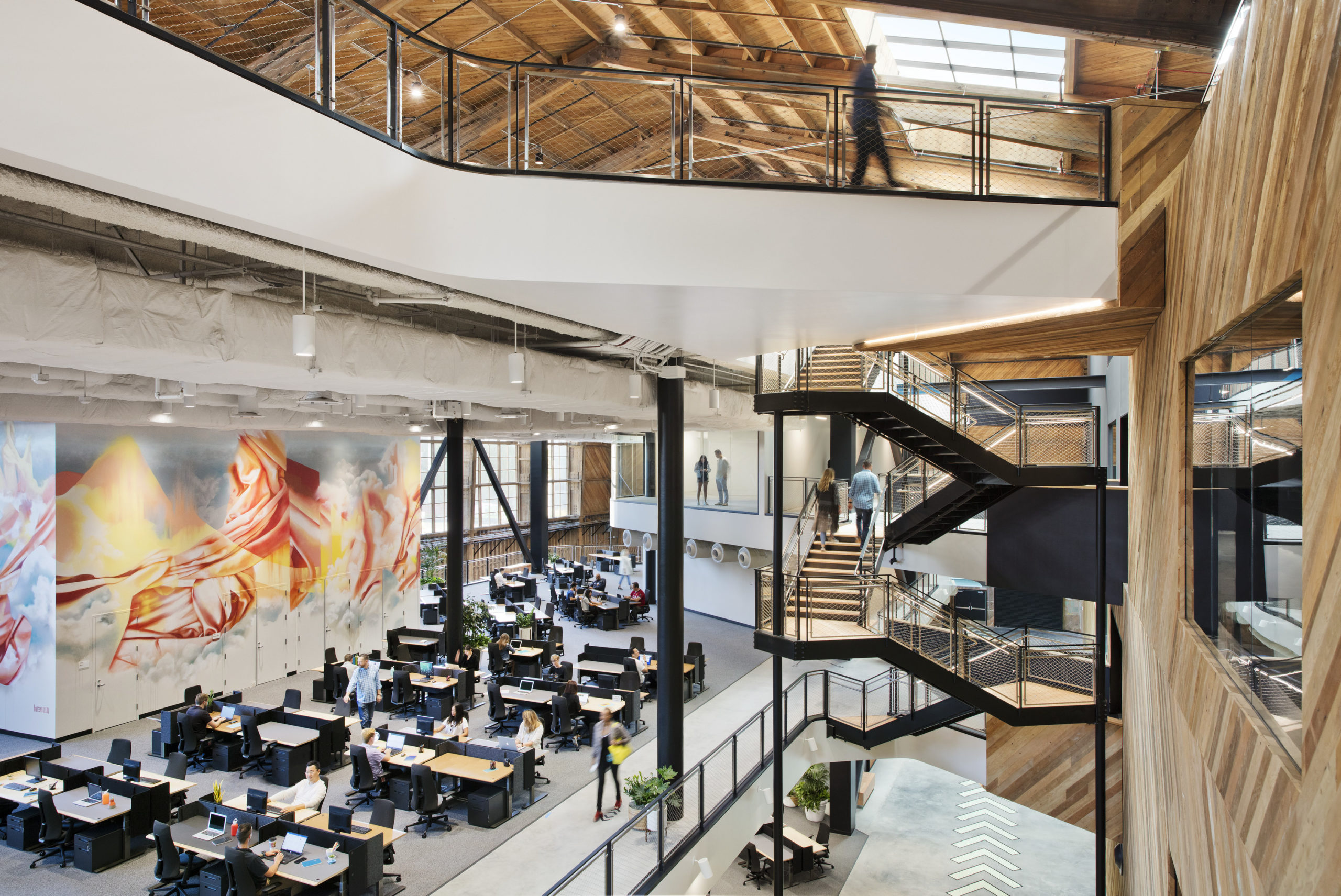
Google, Spruce Goose; Image © Connie Zhou
We’ve seen it in airports for years. I saw it over the weekend getting takeout from my favorite Italian restaurant. To get from point A to point B, you must follow a specific route. The idea of creating one-way primary circulation paths in the workplace is a hot topic for many return to office strategies. The goal is to prevent potentially infectious collisions, especially at pinch points or bottlenecks.
Signs are likely to point people in certain directions, even if that means taking the long way to your desk or the bathroom. While it will be a huge learning curve in the corporate workplace, this kind of traffic approach is already very common (and has proven successful) in hospitals to avoid the spread of pathogens. Here, again, we may find that the physical adaptions are much less impactful than the behavioral adaptations.
Overall, will the harsh realities of the post-COVID world alter time hewn preferences and behaviors of the workforce? Absolutely, but only time will tell how drastic or enduring those changes will be.
Architects: Showcase your next project through Architizer and sign up for our inspirational newsletter.
Top image: Cedars-Sinai Medical Center, 6500 Wilshire Boulevard, 20th Floor, FPDC Relocation; Image © Garrett Rowland
